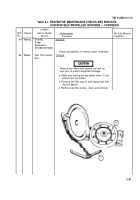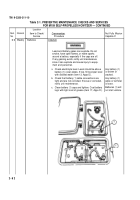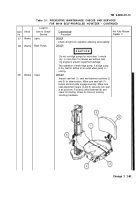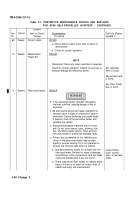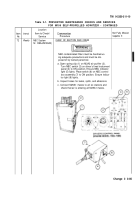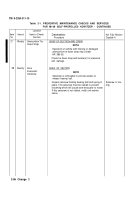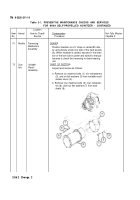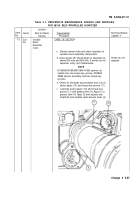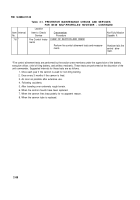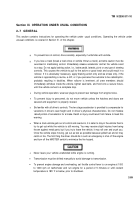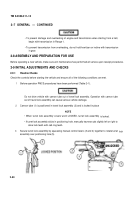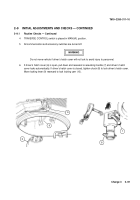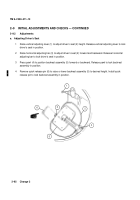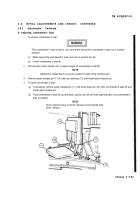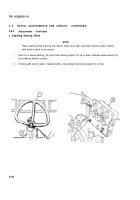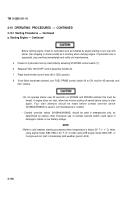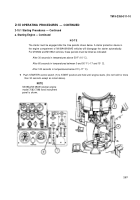TM-9-2350-311-10 - Page 185 of 775
Section Ill. OPERATION UNDER USUAL
2–7 GENERAL
TM 9-2350-311-10
CONDITIONS
This section contains instructions for operating the vehicle under
unusual conditions is covered in Section IV. of this chapter.
●
●
●
●
●
●
●
usual conditions. Operating the vehicle under
To prevent loss of control, drive carefully, especially if unfamiliar with vehicle.
If you lose a track (break a track shoe or vehicle throws a track), extreme caution must be
exercised in maintaining control. Immediately release accelerator and let the vehicle coast
to a stop. Do not apply braking action, i.e., brake pedal, laterals, pivot or any type of steering
controls. This causes the vehicle to pull to the active or good track and could result in a
rollover. If it is absolutely necessary, apply braking action only and we stress only, if the
vehicle is approaching a ravine, a cliff, or if you perceive the outcome to be catastrophic,
probably resulting in fatalities. When rollover is imminent, all crew members should
immediately withdraw inside the vehicle, tighten seat belts, and hold onto a secure fixture,
until the vehicle comes to a complete stop.
During vehicle operation, wear ear plugs to prevent ear damage from engine noise.
To prevent injury to personnel, do not move vehicle unless the hatches and doors are
secured and equipment is properly stowed.
Be familiar with all driver’s controls. The two stage accelerator is provided to compensate for
variations in driver’s seat height and in driver’s physical characteristics. Do not mistake
raised portion of accelerator for a brake. Death or injury could result from failure to heed this
warning.
When a track vehicle gets out of control and overturns, it is safer to stay in the vehicle than to
try to get out while the vehicle is still moving. You may receive slight injuries from being
thrown against metal parts; but if you try to leave the vehicle, it may roll over and crush you.
Once the vehicle stops moving, get out as fast as possible because spilled fuel and oil may
catch on fire. The first thing the driver should do in such an emergency is shut off the engine
and turn off the MASTER switch to minimize the fire hazard.
Never leave your vehicle unattended while engine is running.
Transmission must be shifted manually to avoid damage to transmission.
To prevent engine damage and overheating, set throttle control lever to run engine at 1000
to 1200 rpm on tachometer and run engine for a period of 5 minutes or until coolant
temperature is 185° F or below, prior to shutdown.
2-89
Back to Top

